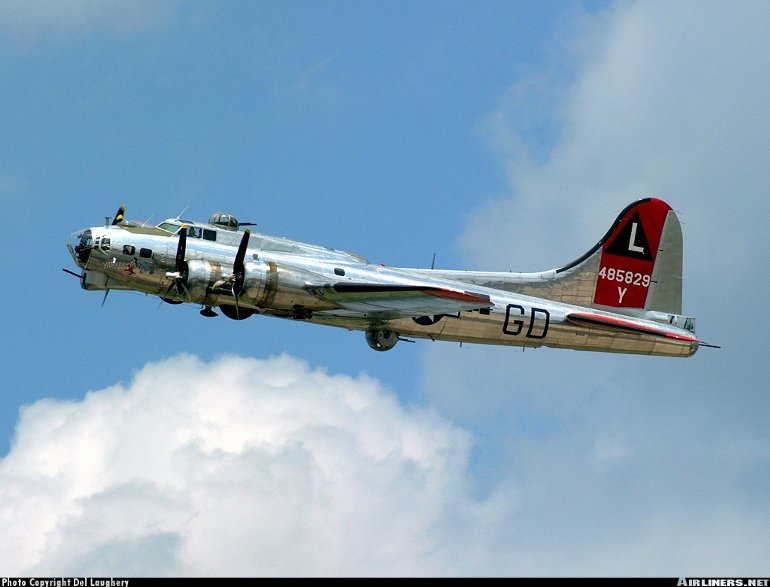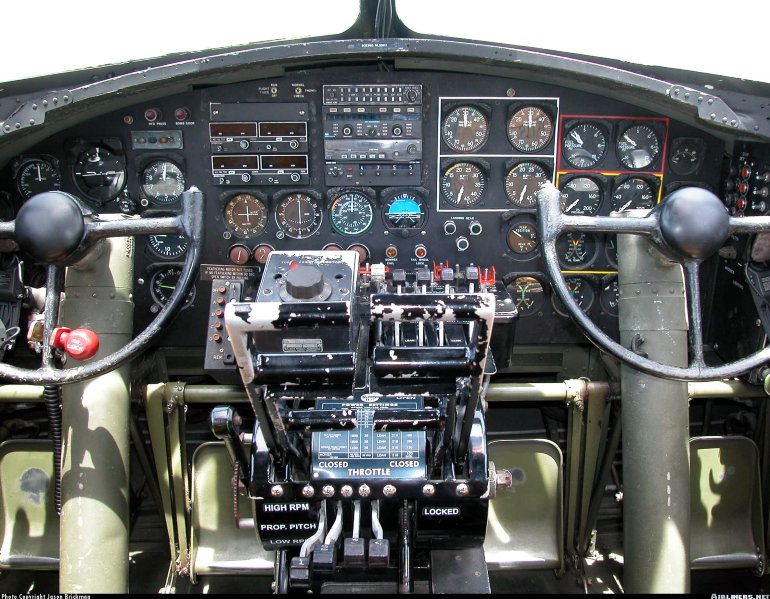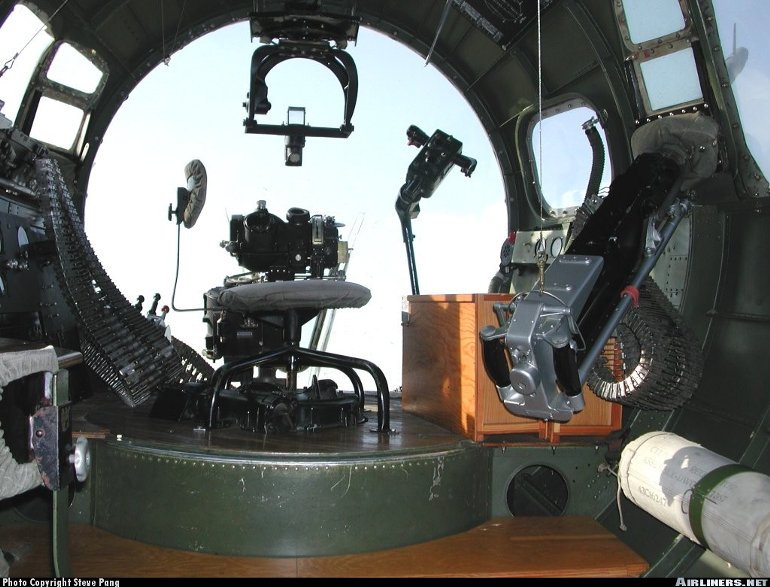Aircraft Technical Data
Boeing B-17 Flying Fortress



| Details | |
| Country of Origin | United States of America |
| Type | Four-Engined Long Range Heavy Bomber |
| History | The Fortress was originally designed to meet a bomber specification issued by the U.S. Army Air Corps in 1934. The prototype, Boeing Model 299, first flew on July 28, 1935 and the first Y1B-17 of a production order of thirteen was delivered to the Air Corps in March, 1937. In January, 1939 an experimental Y1B-17A fitted with turbo-supercharged engines was delivered to the Army Air Corps. Following successful trials with this aircraft an order for 39 was placed for this model under the designation B-17B. The B-17G was introduced onto the Fortress production line in July of 1943, and was destined to be produced in larger numbers than any other Fortress variant. The most readily-noticeable innovation introduced by the B-17G was the power-operated Bendix turret mounted in a chin-type installation underneath the nose. This turret was equipped with two 0.50-inch machine guns. This installation had first been tested in combat by the YB-40 and was found to be the only viable innovation introduced by the unsuccessful escort Fortress. Another innovation introduced by the G was having the waist guns being permanently enclosed behind windows instead of being mounted behind removable hatches. This made the rear fuselage somewhat less drafty. The cheek nose guns introduced on the late B-17F were retained, but were staggered so that the left gun was in the forward side window and the right gun was in the middle side window, which reversed the positions used on the late Fs. The cheek gun mounts bulged somewhat outward into the airstream, which helped to improve the forward view from the cheek gun positions. The forward chin installation and the associated cheek guns were first tested out on B-17F-115-BO 42-30631. Originally, the Bendix turret was to be introduced on the Boeing production line with F-135, but the changes were sufficient to justify a new series letter, and the F-135s became G-1. The B-17G now had the defensive firepower of no less than thirteen 0.50-inch machine guns: two chin guns, two cheek guns, two guns in the dorsal turret, two guns in the ventral turret, two guns in the waist, two guns in the tail and one gun in the roof of the radio operator's position. B-17Gs were built by all three members of the "B.V.D." production pool, with the Boeing lots ranging from production blocks G-1 to G-110, the Douglas blocks ranging from -5 to -95, and the Lockheed-Vega blocks ranging from -1 to -110. The B-17G entered service with the Eighth and Fifteenth Air Forces in late 1943. Camouflage paint was deleted from production B-17Gs starting in January of 1944. B-17Gs were delivered in natural metal finish starting in (but not at the beginning) of production blocks G-35-BO (Boeing), G-20-VE (Lockheed-Vega), and G-35-DL (Douglas-Long Beach). The so-called "Cheyenne" tail gun mounting modifications were incorporated in the B-17G-80-BO, -45-DL, -35-VE and subsequent batches. These tail gun mountings also had a reflector gunsight instead of the previous ring and bead. With this installation, these B-17Gs were five inches shorter than the earlier versions. On later production versions, it was found necessary to stagger the waist gun positions so that the two gunners would not get in each other's way. On the last production batches (B-17G-105 and -110-BO, B-17G-75 to -85-DL, and B-17G-85 to -110-VE), the radio compartment gun was not installed. The ammunition capacity of the waist guns was increased to 600 rpg. When production terminated in 1945, a total of 4035 B-17Gs had been built by Boeing, 2395 by Douglas and 2250 by Lockheed-Vega. The last Boeing-built B-17G was delivered on April 13, 1945. B-17G-1-VE 42-38940 was redesignated XB-17G when assigned to test work. It was not a prototype. |
| Powerplants | Four 1200 h.p. Wright R-1820-97 nine-cylinder radial air-cooled engines with General Electric Type B-22 exhaust-driven turbo-superchargers. |
| Performance | Maximum speed 472km/h (256kt) at 25,000ft. Climb to 25,000ft 41 min. Service ceiling 35,000ft. Normal range (maximum bomb load and normal fuel) 1770km (955nm) at 352km/h (190kt) at 25,000ft. |
| Weights | Weight empty 14,855kg (32,720lb). Normal weight loaded 22,475kg (49,500 lb). Maximum overloaded weight 27,240kg (60,000lb). |
| Dimensions | Wing span 31.6m (103ft 9in), length 22.8m (74ft 9in), height 5.8m (19ft 1in), wing area - 132sq m (1420sq ft). |
| Capacity | Normal crew of six to ten. Bomb-aimer's compartment in extreme nose. Pilot's compartment seating two side-by-side with dual controls in front of leading-edge of wing. Aft of pilot's position is an upper electrically-operated two-gun turret. Radio-operator's position amidships. Two gun positions aft of the wings, one-two gun electrically-operated beneath the fuselage and one position in the extreme tail. |
| Production | Total production 12731, comprising 1 Model 299, 13 Y1B-17, 1 Y1B-17A, 39 B-17B, 38 B-17C, 42 B-17D, 512 B-17E, 3405 B-17F (2300 by Boeing, 605 by Douglas, 500 by Lockheed-Vega), and 8680 B-17G (4035 by Boeing, 2395 by Douglas, 2250 by Lockheed-Vega). Many were converted to other models. |
| Related Links | Boeing B-17 Flying Fortress |
The backbone of this section is from the The International Directory of Civil Aircraft by Gerard Frawley and used with permission. To get your own copy of the book click here. |
|








